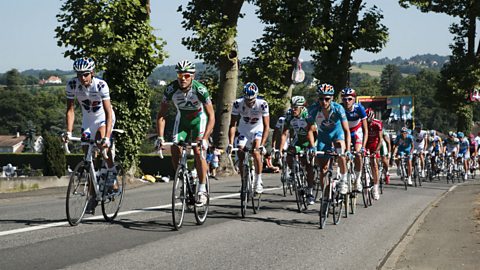Muscle types
There are three types of muscle in the body:
- smooth muscle – found in the internal organs and blood vessels - this is involuntary
- cardiac muscle – found only in the heart - this is involuntary
- skeletal muscle – attached to the skeleton - this is voluntary
Involuntary muscles are not under our conscious control which means we can't make them contract when we think about it.
Voluntary muscles are under our conscious control so we can move these muscles when we want to.
Muscle fibre types
There are two different types of skeletal muscles:
- slow twitch, also known as type I - oxidative
- fast twitch, also known as type II - glycolytic
Each type of muscle fibre has different characteristics which are shown in the table:
| Type I | Type II | |
| Speed of contraction | Slow | Fast |
| Force produced | Low | Medium/high |
| Resistance to fatigue | High | Medium/low |
| Colour | Red | White |
| Energy system | Aerobic | Anaerobic |
| Speed of contraction | |
|---|---|
| Type I | Slow |
| Type II | Fast |
| Force produced | |
|---|---|
| Type I | Low |
| Type II | Medium/high |
| Resistance to fatigue | |
|---|---|
| Type I | High |
| Type II | Medium/low |
| Colour | |
|---|---|
| Type I | Red |
| Type II | White |
| Energy system | |
|---|---|
| Type I | Aerobic |
| Type II | Anaerobic |
Endurance cyclists need a high percentage of type I fibres so that their muscles can work for the duration of a race without getting tired. These muscles are red in colour because of the amount of capillaries that transport the oxygenated blood to the working muscles.

Sprinters need a high percentage of type II fibres which allow their muscles to contract very quickly. Fast muscle contractions give runners power and enable them to maintain a high speed over a short distance. However, this type of muscle tires very quickly, meaning sprinters are not able to run at this speed for very long.

Question
Explain which muscle fibre type a long distance runner requires in order to be successful in their event.
They would need a high percentage of type I muscle fibres as these contract slowly with low force, which allow the runner to move at a steady, but not fast pace. These muscles can keep contracting for long periods of time without fatigueExtreme tiredness caused by physical activity., something that is necessary when running long distances.